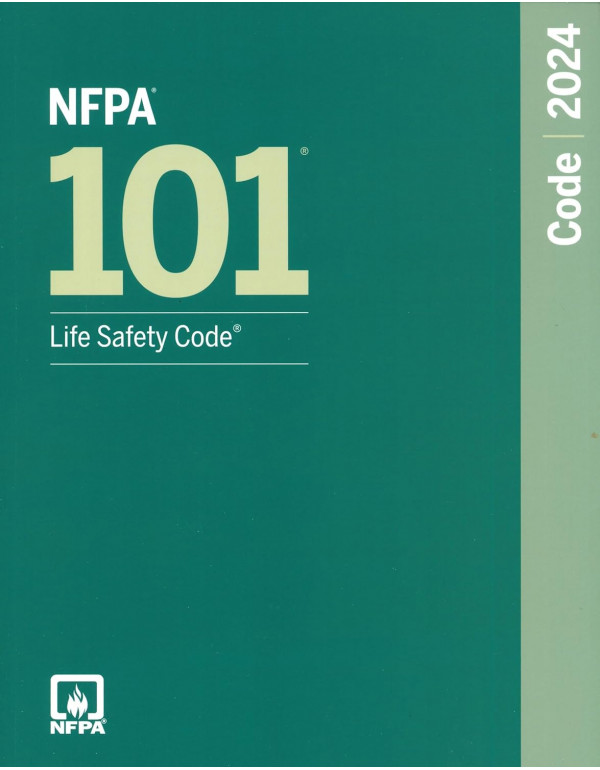NFPA
101, Life Safety Code (2024)
Overview
Title: NFPA 101, Life Safety Code (2024)
Author: National Fire Protection Association (NFPA) (considered the
developer/publisher)
Edition: 2024
Key Themes
Establishing minimum requirements for safeguarding building occupants from
fire and related hazards
Prescribing strategies based on building use, occupancy levels, and
construction type
Promoting fire prevention, occupant evacuation, and fire suppression
measures
Features
Covers a wide range of occupancies including residential, commercial,
industrial, and institutional settings
Provides guidance on fire alarm systems, sprinkler systems, exit routes, and
means of egress
Addresses fire safety considerations for special occupancies like
healthcare facilities and daycare centers
Target Audience
Architects, engineers, and other design professionals
Building code officials and inspectors
Fire marshals and life safety professionals
Building owners and managers
Anyone involved in ensuring safe building environments
Strengths
Widely adopted benchmark for life safety in buildings throughout the United
States
Regularly updated to reflect advancements in fire protection technologies
and practices
Offers a comprehensive framework for mitigating fire risk across diverse
building types
Chapter Headings (Specific titles may vary slightly):
Scope and Administration
Definitions
General Building Requirements
Means of Egress
Fire Alarm Systems
Extinguishing Systems
Smoke Control Systems
Fire Protection Features
Special Occupancies and Uses
Referenced Standards
Closing Paragraph
NFPA 101, Life Safety Code (2024), serves as a cornerstone for fire safety
in buildings. By outlining a prescriptive approach to fire protection, the
code aims to minimize the impact of fires on people and property. Following
the guidelines set forth in NFPA 101 contributes significantly to creating
safer spaces for everyone.
Note: It's important to remember that NFPA 101 is a code, not a book in the
traditional sense. It doesn't have chapters with narratives but uses a
structured system of chapters and articles containing specific requirements. |
